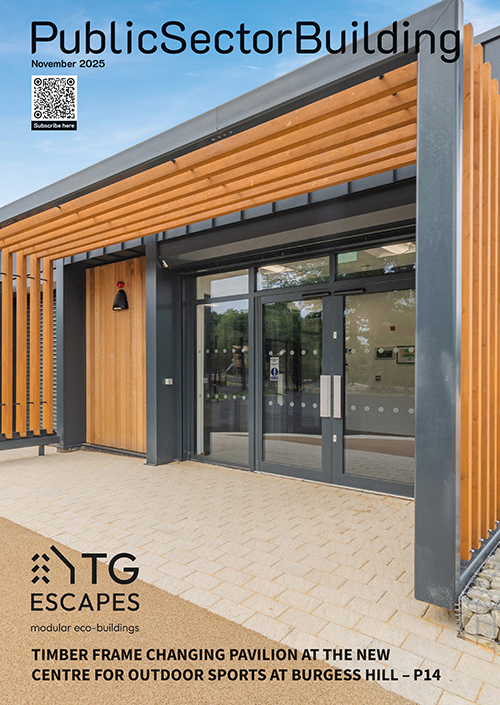With the link between excessive noise in classrooms and poor educational outcomes very well established in studies around the world, everyone involved in the design, specification and fit-out of schools and colleges has a responsibility to ensure their solutions deliver the right acoustic environment to prevent failing our children. Hush Acoustics has more…
From head teachers, school governors and budget holders to architects, building consultants, contractors and specialist sub-contractors, every stakeholder in school development and refurbishment projects needs to be aware of where the potential acoustic failings lie in order to achieve the best possible results for teaching and learning.
Poor acoustic conditions are usually caused due to three issues, which will affect different teaching spaces to varying degrees depending on the construction of the building, its internal décor, fit out and location:
External noise
This could be noise from a busy nearby road, factory, airport or railway line. Typical solutions include replacing the windows, adding secondary glazing or upgrading the soundproofing capability of external walls – essentially making the walls more capable of blocking external noise sources.
Noise from adjoining rooms
If the school building is constructed with thin or low density walls and floors, noise will easy transmit between rooms. The good news is that there are numerous solutions available to address this type of sound transmission which can be tailored to the type of floor, ceiling or wall construction.
Reverberation
This is what causes high levels of background noise, also referred to as ambient noise, and it is one of the most serious acoustic issues affecting schools. It is caused by sound waves bouncing off hard surfaces, such as wooden floors, plastered walls and furniture, resulting in often unbearably high levels of noise within a room.

The solution is to add sound absorption which takes the form of wall and ceiling mounted sound absorber panels, strategically placed.
Achieving acoustic designs that work
Soundproofing and acoustic control can be a complex area, with no ‘one size fits all’ approach ever possible because of the different materials used to construct school buildings, different room sizes and the huge variety of interiors.
This is why it is so important to consult an acoustic specialist before the design or specification is agreed. Their input will make a major contribution to the success of a project and help deliver a school environment that will enable students to thrive for many years after the building project is complete.
Go beyond what BB93 states
Document E for England & Wales, Section 5 for Scotland and Part G in Northern Ireland cover the required standards that need to be achieved in different building types, including schools.
However, the information in these documents is very vague and does not help solve all the problems that are found in the schools we build or refurbish in the UK.
Therefore, there is a recognised additional document that is referenced as BB93 (Building Bulletin 93), which is used in design and specification to reduce noise within educational buildings.
This document sets minimum performance standards for acoustics in schools, with the intention of making sure school buildings provide the right acoustic conditions to enable effective teaching and learning.
As useful as BB93 is, however, it should only be regarded as the bare minimum – a method of compliance, rather than to deliver quality for students and teachers. Even when a school building is created in line with BB93, it could still result in classrooms being sub-standard.
The approach should be to develop a design that is, of course, compliant with BB93 but then check whether the specification will be adequate. Often going beyond the minimum requirements, even by just a small improvement, could deliver exponential benefits.
Stick to the specification
It is also vitally important that the acoustic solution specified is strictly adhered to. Any deviation, including substituting just one element with a supposedly equivalent product, could completely undermine your efforts and result in the acoustic treatment being a complete waste of money.
Don’t overlook the need for good quality installation
Remember that the acoustic treatment will only be effective if it is installed to a good standard. Be vigilant and, if you are installing the acoustic treatment, make sure you fit each element as per the manufacturer guidelines. And if you are commissioning the work, take time to check the workmanship as any mistakes will quickly come to light when the post-installation sound test is conducted. If it fails, this could lead to the need for additional work and potentially disrupt daily school activities further.
Reducing noise transmission between individual rooms
Hush Acoustics has a wide variety of products and fully tested soundproofing systems available to address both airborne and impact sound transmission through separating floors and walls.
For example, where a classroom is suffering as a result of unwanted noise in an upstairs room, both the ceiling and floor above can be enhanced. One way of doing this is to add a floating acoustic floor and a decoupled suspended ceiling with the voids filled with Hush-Slab 100 sound absorber slabs. Such a treatment would aim to both directly block sound waves, by absorbing them, and prevent them transmitting through the floor structure.
The approach to walls may be similar, and where a school building features concrete, masonry or screed floors, an alternative approach would be adopted to achieve a high quality outcome.
Tackling reverberation with sound absorber panels
Hush Acoustics manufactures sound absorber panels which are designed to reduce the extent of hard surface areas in a room, usually by installing them on walls and ceilings. The result is that more soundwaves generated from activities such as people talking and music playing are absorbed rather than being reflected back into the room.
Providing the correct specification of panel is used and installed appropriately, with the right level of coverage for the room, these sound absorbers can transform acoustic comfort instantly. Hush Acoustics will determine the requirements of a classroom through an acoustic survey – the calculations we are able to make from this will tell us what absorbers are needed to deliver the improvements.
Hush-Absorber 50 and Hush Baffles are just two of the solutions available from Hush Acoustics that are effective at reducing reverberation in educational environments – as this recent installation at Walsall College illustrates.
Trust the acoustic experts
Established more than 30 years ago, Hush Acoustics is one of the UK’s leading designers and manufacturers of soundproofing products and systems. The business was founded in Scotland, where sound insulation standards have always been the highest in the UK, and today it operates from an HQ and distribution centre in Sheffield serving customers nationwide.
All its products and systems exceed the requirements of the Building Regulations in all four UK nations, including Approved Document E in England and Wales, and its systems are Robust Details compliant, as well as BB93.
Find out more at www.hushacoustics.co.uk.




